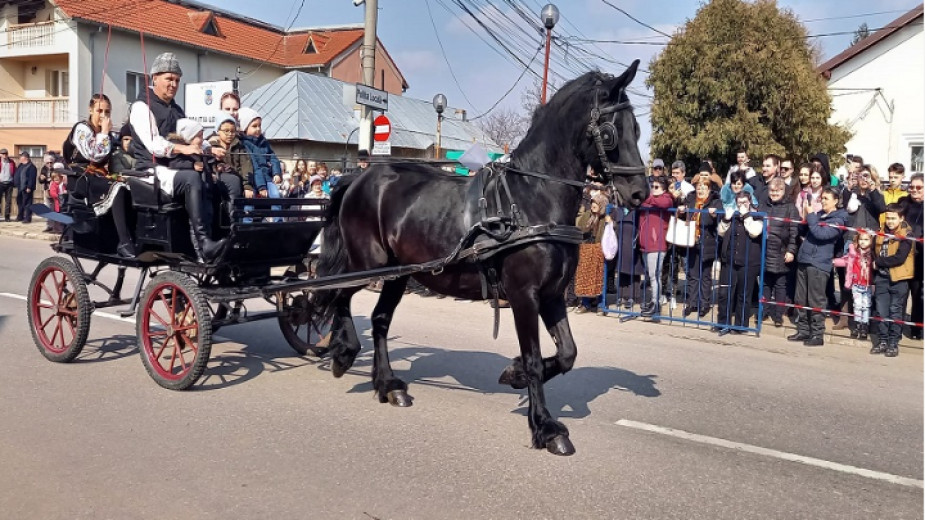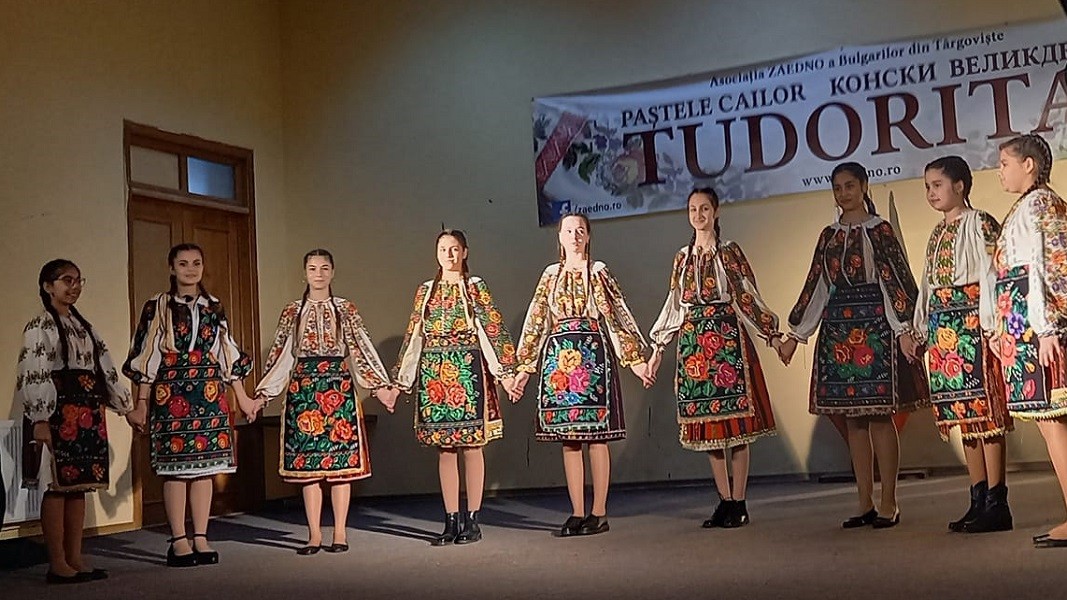
"Matej Vojvoda" is the name of a district in the Romanian town of Targovishte. A Bulgarian community of nearly 700 people lives here, united by the association Zaedno ("Together").
In the building of the association there is a museum of the Bulgarian community in the town, which preserves the history of the first 57 Bulgarian families who settled in Dâmbovița County 171 years ago, reports BTA.
The museum exhibitsold documents, items of everyday life and folk costumes. A shirt with embroidered roses 100 years old, a 1930 photo of the first gas station in this Bulgarian neighborhood, a horse harness from 1910 and a saddle from 1935 are but a few of the exhibits. A list of the municipality provides information on how many Romanians with Bulgarian roots lived there in 1940 and what their family and property status was.
"When they settled in the county, the Bulgarians became known for growing vegetables and for their traditional Bulgarian banitsa, which unlike the Romanian pastry is salty," the founders of the museum told BTA. It opens its doors on a symbolic date - November 30, the Day of Bulgarians in Targovishte.
From the website of the association "Together" http://www.zaedno.ro/ we also learn that at the end of 1854 the Bulgarian settlers, together with the locals, made a full-scale renovation of the Church of St. Niphon and created a cemetery on land donated to the community. And in 1890, priest Nikolae Grigore Arama founded a mixed school, which was later moved to a new location on land donated by industrialist Joseph Samuili. The latest data of the National Statistical Institute of Romania show that the ethnic Bulgarians in Romania number 5 975.
The latest data of the National Statistical Institute of Romania show that the ethnic Bulgarians in Romania number 5 975.
According to the Bulgarian deputy in the Romanian parliament Georgi Nakov, relations between Bulgaria and Romania are developing very well, both economically and culturally.
"I think that we are now seeing a very clear manifestation of Bulgarian national consciousness in Romania," Georgi Nakov told our colleague Vladimir Mitev in a special interview for Radio Bulgaria. - It was also manifested in the celebrations on the occasion of 3 March 2023. During the same week, the Kukeri (so-called Kuchi) festival in Brăneşti and the Horse Easter in Targovishte took place. Shortly before, Trifon Zarezan was celebrated in the village of Izvoarele. The communities of Băleni Sârbi and Targovishte are rather geographically similar, but Izvoarele is quite different. In Banat we are several communities, but we are part of the same Bulgarian national minority."
The festivities strengthen not only the official relations between Romania and Bulgaria, but also the relations among the citizens, Georgi Nakov further pointed out. His words are confirmed by Ambassador Radko Vlajkov, who at the reception at the Embassy for Bulgaria's March 3 National Day in Bucharest said "We, Bulgarians and Romanians, have rediscovered each other."
In the coming days stay tuned for more interesting information about the relations between Bulgaria and Romania in Vladimir Mitev's interviews for Radio Bulgaria.
English version: Elizabeth Radkova
The program of the Orthodox Book Week offers meetings with authors, publishers and translators of Orthodox books from the last few years. The event is held until November 10 at the ''St. Procopius of Varna'' Church, with meetings taking place every..
The "Kabiyuk" horse breeding farm in the village of Konyovets is the oldest stud farm in Bulgaria, founded in 1864 by Midhat Pasha, the governor of the vilayet of Ruse, to produce horses for the Turkish army. The farm existed until the Russo-Turkish War..
There is no exact statistic on the number of Bulgarians living abroad, but a report from the Ministry of Foreign Affairs from last year indicates that around 2.8 million Bulgarians are living outside the country . According to the 2021 population census..
The Varna Regional Library "Pencho Slaveykov" has acquired a humanoid robot. It was unveiled by the library's director, Radka Kalcheva, during the..

+359 2 9336 661
